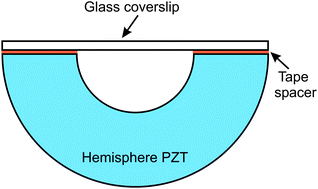Acoustic lysis of vegetative bacterial cells: Method and device development
Abstract
A critical problem of many pathogen detection assays is the availability of intracellular

* Corresponding authors
a
Bioscience Division, Mail Stop M888, Los Alamos National Laboratory, PO Box 1663, Los Alamos, NM
E-mail:
oanam@lanl.gov
Tel: +505-667-9024
b Life Technologies, Eugene, OR
c Center for Biomedical Engineering, University of New Mexico, NM
A critical problem of many pathogen detection assays is the availability of intracellular

 Please wait while we load your content...
Something went wrong. Try again?
Please wait while we load your content...
Something went wrong. Try again?
O. C. Marina, C. K. Sanders, G. Kaduchak, G. R. Goddard and S. W. Graves, Anal. Methods, 2011, 3, 2573 DOI: 10.1039/C1AY05326D
To request permission to reproduce material from this article, please go to the Copyright Clearance Center request page.
If you are an author contributing to an RSC publication, you do not need to request permission provided correct acknowledgement is given.
If you are the author of this article, you do not need to request permission to reproduce figures and diagrams provided correct acknowledgement is given. If you want to reproduce the whole article in a third-party publication (excluding your thesis/dissertation for which permission is not required) please go to the Copyright Clearance Center request page.
Read more about how to correctly acknowledge RSC content.
 Fetching data from CrossRef.
Fetching data from CrossRef.
This may take some time to load.
Loading related content
